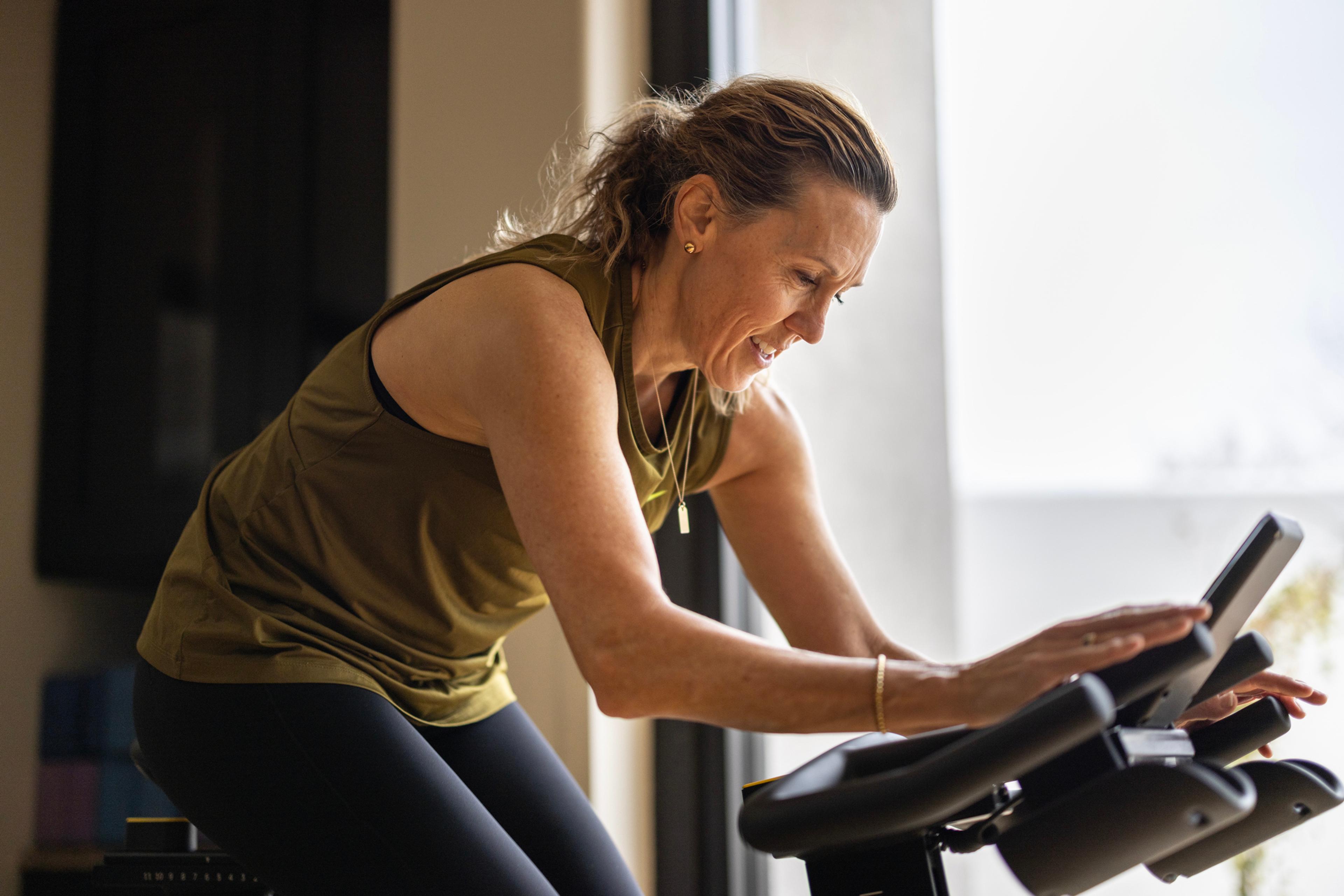Tips for Exercising During Menopause

Lindsay Knake
| 3 min read

Menopause can lead to decreased energy, low mood, sleep difficulties and weight gain, among other symptoms. These symptoms typically last seven years but can last as long as 14 years.
While about 75% of women experience menopause symptoms, which start at the average age of 51, there are ways to manage symptoms and maintain health.
Here are basic ways to stay healthy during menopause, according to the National Institute on Aging:
- Eating a healthy diet with enough calcium and vitamin D
- Limiting or avoiding alcohol
- Avoiding smoking
- Exercising
- Maintaining a healthy weight
Exercise can help prevent weight gain and preserve muscle mass, which women tend to lose during menopause, according to the Mayo Clinic.
During menopause, women are at greater risk of depression, anxiety and irritability, according to the Cleveland Clinic. Exercise is an important way to lift your mood and stay mentally healthy.
Exercising during and after menopause may also reduce risk of cancer and other diseases that can increase with weight gain, such as heart disease, type 2 diabetes, breast cancer, colon cancer and endometrial cancer, according to the Mayo Clinic.
Tips to exercise during menopause
Healthy women should aim for 150 minutes a week of moderate aerobic activity, at least 75 minutes of vigorous aerobic activity and strength training twice per week, according to the Department of Health and Human Services Office of Women’s Health.
Strength training
As estrogen levels decrease during menopause, women can be a greater risk of developing osteoporosis, according to WebMD. Strength training and weight-bearing exercise can slow bone loss and lower the risk of osteopenia and osteoporosis. This can also help reduce the risk of bone fractures and breaks later on.
Doing body weight exercises or using weight machines, hand-held weights or resistance bands at a weight that tires your muscles at 12 repetitions is a good way to get started. Start with fewer repetitions and lower weight and gradually increase the weight and repetitions as you get stronger.
Aerobic exercise
Aerobic activity such as walking, running, swimming or biking are essential exercise for menopausal women. These exercises can help you maintain a healthy weight, lower LDL or bad cholesterol and reduce the risk of heart attacks, strokes and high blood pressure, according to a study. Higher impact movements like walking, running or dancing can also help prevent osteoporosis. Low impact activities like swimming and biking can help if you struggle with joint pain.
When you’re starting with aerobic exercise, begin with 10 minutes a day and gradually increase the duration.
Stability and balance exercises
Working on your balance can help prevent falls as you age. About one in four Americans age 65 and older have a fall each year. Practicing Tai Chi, yoga or simple exercises such as standing on one leg at a time allow you to improve your balance and stability to reduce fall risk.
Stretching and flexibility
Maintaining flexibility is another way to stay healthy and improve your quality of life as you go through menopause. Doing exercises such as yoga and Pilates can improve your muscle function and range of motion. Stretch your muscles after each workout as another way to increase your flexibility.
Talk to your primary care physician if you want to start an exercise routine or how to improve one you are already doing.
Image: Getty Images
Related:





